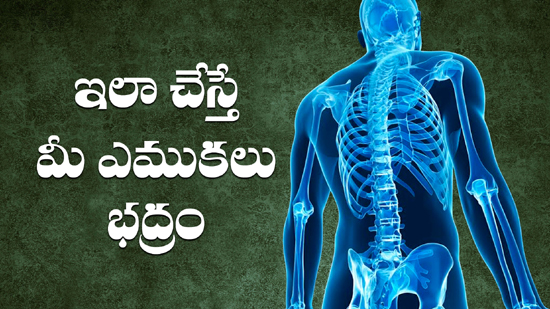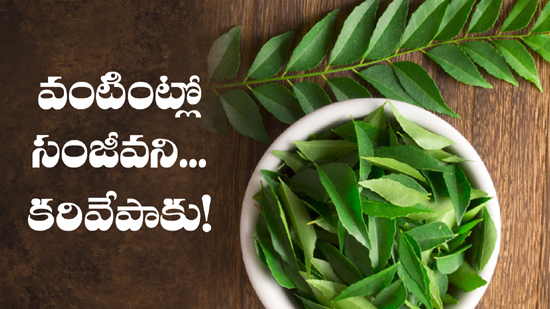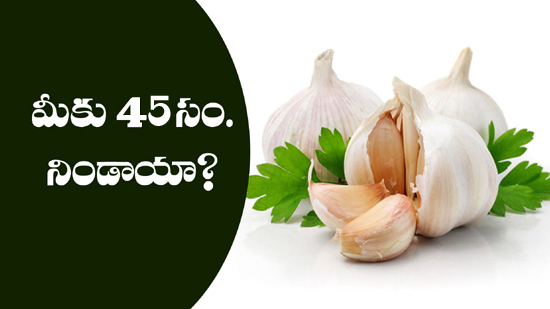వర్షంలో ఆడుకుంటున్నారా..? అయితే జాగ్రత్త
వర్షాకాలం అంటే ఎవరికి ఇష్టం ఉండదు చెప్పండి..బయట వర్షం పడుతుంటూ సరదాగా చిరు జల్లుల్లో తడిసిపోతాం.. ఇంట్లోకి వచ్చి అమ్మ చేతి వేడి వేడి పకోడీలో.. భజ్జీలో తినడం అబ్బా ఆ ఆనందాన్ని మాటల్లో చెప్పలేం.. అయితే వర్షంలో తడవటం ఆ క్షణం వరకు బాగున్నా.. తడిసిన తర్వాత మన శరీరాలతో ఆడుకోవటానికి వైరస్లు కాచుకుని కూర్చుంటాయి. ఈ కాలంలో బ్యాక్టీరియా, ఫంగస్, ఈస్ట్లు ఇన్ఫెక్షన్లను కలగజేస్తాయి.. అందుకే వర్షాకాలంలో కొన్ని జాగ్రత్తలు తీసుకోవాలంటున్నారు వైద్యులు. అవేంటో ఒకసారి చూద్దాం: * చర్మాన్ని వీలైనంత పొడిగా ఉంచుకోవాలి. * చేతులు, కాలి వేళ్ల మధ్య తడిని ఎప్పటికప్పుడు తుడుచుకుంటూ..యాంటీ ఫంగల్ పౌడర్ చల్లుకోవాలి. * పాదాలకు ఎక్కువ చెమట పట్టే శరీరతత్వం ఉన్నవాళ్లు ఈ కాలంలో షూస్కి బదులు గాలి ఆడే చెప్పులు ధరించడం మంచిది. * నీటిలో ఎక్కువగా పనిచేసే వాళ్లు, గృహిణులు, రైతులు, కూలీలు పాదాలకు, చేతులకు గ్లౌజులు వేసుకోవాలి. * షుగర్ ఉన్నవాళ్లు దానిని అదుపులో ఉంచుకోవాలి..ఎందుకంటే వర్షాకాలంలో షుగర్ పేషేంట్ల పాదాలకు ఇన్ఫెక్షన్లు చాలా సులభంగా సొకుతాయి. * వానలో తప్పనిసరై బయటకు వెళ్లాల్సి వస్తే గొడుగులు, రెయిన్కోట్లు వేసుకోవడం మంచిది. * పొడిగా ఉంటే బట్టలను ధరించాలి.
read moreఉప్పు సమస్య మన ఒక్కరిదే కాదు!
ఉప్పు తినడం తగ్గించండో... చక్కెరని తక్కువగా వాడండో... ఆరోగ్యాలు పాడైపోతున్నాయో... అని కేవలం మన దేశంలోనే కాదు! ప్రపంచంలో ఏ మూలకి వెళ్లినా సలహాలు వినిపిస్తున్నాయి. ఈ సలహాలను బలపరిచేందుకు రోజుకో నివేదికో, వారానికో పరిశోధనో బయటకు వస్తోంది. తాజాగా ఆస్ట్రేలియాకు చెందిన ‘విక్టోరియా విశ్వవిద్యాలయం’ Australia’s Health Tracker పేరిట ఒక నివేదికను జారీచేసింది. ఆ దేశంలో ప్రస్తుత ఆహారపు అలవాట్లు ఎలా ఉన్నాయి, వీటిలో ఎలాంటి మార్పులు రావాలి... తదితర అంశాల మీద కొన్ని గణాంకాలను వెల్లడించింది. - ఈ నివేదిక ప్రకారం 20 కాదు 30 కాదు! దాదాపు 92 శాతం మంది యువత తగిన శారీరిక శ్రమకు దూరంగా ఉంటున్నారంట. ఫలితం! ప్రపంచంలోని ఊబకాయపు జనాభాలో ఆ దేశ యువత ముందుకు దూసుకుపోతోంది. - యువతే కాదు! పిల్లల పరిస్థితీ ఇలాగే ఉంది. ప్రతి నలుగురు పిల్లల్లో ఒకరు ఊబకాయంతో బాధపడుతున్నట్లు తేలింది. చిరుతిళ్ల ద్వారా దాదాపు 40 శాతం ఆహారాన్ని అధికంగా తీసుకోవడమే దీనికి కారణం అన్న విషయమూ బోధపడింది. - ఇక 17 ఏళ్లు దాటినవారిలో పొగతాగడం, మద్యపానం సేవించడం సహజమైన అలవాటుగా మారిపోయిందట. ఈ మద్యపానపు వ్యసనం ఒకప్పుడు మగవారిలోనే ఉండేదనీ, ఇప్పుడు మద్యాపానానికి సంబంధించిన అనారోగ్యాలతో మహిళలు కూడా ఆసుపత్రుల పాలవుతున్నారనీ గణాంకాలు స్పష్టం చేస్తున్నాయి. - మొత్తంగా చూస్తే సగటు ఆస్ట్రేలియావాసి అసలు మోతాదుకంటే 62 శాతం అధికంగా ఉప్పుని తీసుకుంటున్నట్లు తేలింది. పైగా చిరుతిళ్ల ద్వారా శరీరంలోకి పేరుకుంటున్న చక్కెర నిల్వలూ తక్కువేమీ కాదని గణాంకాలు రుజువు చేస్తున్నాయి. వీటన్నింటి ఫలింతంగా రక్తపోటు, గుండెజబ్బులు వంటి సమస్యలకి బలవుతున్నారట! - ఉప్పు, చక్కెరలు అధికంగా తీసుకోవడం; శారీరిక శ్రమ లేని జీవనశైలిని అవలంబించడం కేవలం మధ్య తరగతి, ఉన్నత మధ్యతరగతి వారి సమస్యే కాదంటున్నారు. ఈ నివేదిక ప్రకారం ఆస్ట్రేలియాలోని ఆదిమజాతివారు, పేదవారు కూడా ఆధునిక జీవనవైలిని అవలంబిస్తూ అనారోగ్యం పాలవుతున్నారు. - పైన పేర్కొన్న వివరాలన్నింటినీ దృష్టిలో ఉంచుకుని... ప్రజల ఆహారపు అలవాట్లలో, మార్పు రావాలని సూచిస్తోంది విక్టోరియా విశ్వవిద్యాలయం. ప్రజల్లో కనుక ఆరోగ్యం పట్ల అవగాహన పెరిగి ఉప్పు, చక్కెరలను తగ్గించుకుంటూ.... అవసరమైనంతమేరా వ్యాయామం చేస్తూ ఉంటే, 2025 నాటికి దేశ ప్రజల ఆరోగ్యంలో ఖచ్చితమైన మార్పులు చోటు చేసుకుంటాయని ఆశిస్తోంది.ఆ ఆశ నెరవేరాలనే కోరుకుందాం. ఇది కేవలం ఆస్ట్రేలియాలోని పరిస్థితి మాత్రమే కాదనీ, మన దేశపు సమస్య కూడా అని గుర్తిద్దాం! - నిర్జర.
read moreSinusitis
Sinuses are air filled spaces present in the head region. There are four such spaces frontal, ethmoid, maxillary and sphenoid sinuses. In normal individuals these are lined by epithelium and filled with air. When these are infected, they may present either as thickened epithelium or completely blocked with fluid. The conditions that may be responsible for sinusitis are: Common cold or any upper respiratory tract infections. Any allergies or the smoke and the environment are the least known causes. Structural deformities like deviated nasal septum or nasal polyps. Depleted immune systems especially those on immunosuppressant drugs. In children most common cause is drinking in lying down position or due to illnesses from other kids. Acute sinusitis is the one with duration less than 12weeks presents with, runny nose, loss of smell, congestion, facial pain, bad breath and sometimes even dental pain. While the presentation of chronic sinusitis rather quiet, runny nose, nasal discharge, headache, fever and nasal blockade. The treatment usually consists of antibiotics for the infection, sometimes steroids are also prescribed. In case of allergies anti-histaminic drugs are given. For simple sinus blockade, decongestants suffice. Along with these, we need to keep away from know allergens, warm inhalations and warm compresses for easing pain. Maintaining good hygiene during cold and flu seasons care possibly reduce the number of attacks. If neglected the infection may creep up causing meningitis, brain abscess and even invade the bone. --Koya Satyasri
read moreపురుషులలో రొమ్ము సమస్యలు
ప్రకృతిపరంగా మగవారికి రొమ్ము ఉండాల్సిన అవసరం లేదు. కాబట్టి వారికి రొమ్ముకి సంబంధించిన ఏ సమస్యలూ ఉండనే ఉండవనుకుంటారు. కానీ ఇది అపోహ అనీ, మగవారిలోనూ రొమ్ముకి సంబంధించిన సమస్యలు వస్తాయని వైద్యలు చెబుతున్నారు. అవేమిటంటే... మగవారిలో పెరిగే రొమ్ములు- గైనకోమాస్టియా ఆడపిల్లలైనా, మగపిల్లలైనా రొమ్ముకి సంబంధించిన కణజాలం ఇద్దరిలోనూ ఉంటుంది. ఆడవారిలో ఈస్ట్రోజన్ అనే హార్మోను ప్రభావం వల్ల కౌమార వయసు నుంచి రొమ్ము పెరుగుదల ఉంటుంది. మగవారిలో ఈ ఈస్ట్రోజన్ ప్రభావం తక్కువగానూ, ఆండ్రోజన్ అనే హార్మోను ప్రభావం ఎక్కువగానూ కనిపిస్తుంది. కౌమార వయసుకి చేరుకున్న మగపిల్లలలో ఒకోసారి శరీరంలోని హార్మోనులు గతి తప్పే ప్రమాదం ఉంది. దీని వల్ల తగినంత ఆండ్రోజన్ ఉత్పత్తి కాకపోవడం... అదే సమయంలో ఈస్ట్రోజన్ ఉత్పత్తి అవసరానికి మించి ఉండటం జరిగిందనుకోండి- వారిలోనూ రొమ్ములు ఏర్పడే అవకాశం ఉంటుంది. ఈ పరిస్థితిని గైనకోమాస్టియా అంటారు. కౌమార వయసులో గైనకోమాస్టియా వచ్చే అవకాశం ఎక్కువగా ఉన్నప్పటికీ, దీనికి ఇతరత్రా కారణాలు కూడా లేకపోలేదు. కొన్ని రకాల మందుల దుష్ప్రభావం, కీమోథెరపీ, కిడ్నీ లేదా కాలేయ సమస్యలు కూడా మగవారిలో రొమ్ములు పెరిగేందుకు దోహదపడుతుంటాయి. గైనకోమాస్టియా వల్ల ఆరోగ్యపరంగా ఎద్దగా ప్రభావం లేనప్పటికీ, రొమ్ములతో కనిపించే మగవారు ఆత్మన్యూనతకు లోనవుతుంటారు. ఒకవేళ కౌమార వయసులోని పిల్లలో ఈ సమస్య ఏర్పడితే వారు తోటివారి ఎగతాళికి గురయ్యే ప్రమాదం ఉంది. ఇలాంటి మానసిక కారణాల వల్ల వారి వ్యక్తిత్వమే దెబ్బతినవచ్చు. సాధారణంగా ఈ సమస్య దానంతట అదే సర్దుకుంటుంది. కానీ నెలల తరబడి కనుక గైనకోమాస్టియా లక్షణాలు కనిపిస్తుంటే వెంటనే వైద్యుని సంప్రదించడం మంచిది. ఎందుకంటే తొలినాళ్లలో కనుక గైనకోమాస్టియాను గుర్తిస్తే పోషకాహారం తీసుకోవడం, తగిన వ్యాయామం చేయడం వంటి చిన్నపాటి చర్యలతో వాటిని నివారించవచ్చు. ఒకోసారి వైద్యులు ఈస్ట్రోజన్ ఉత్పత్తిని నియంత్రించే మందుల ద్వారా కూడా వీటిని నయం చేస్తారు. మరీ అత్యవసరం అయితే సర్జరీ ద్వారా మగవారి రొమ్ములలో అధికంగా పేరుకున్న కొవ్వుని తొలగిస్తారు. ఒకప్పుడు చాలా అరుదుగా కనిపించిన ఈ గైనకోమాస్టియా సమస్య పురుగుల మందులు, కాస్మెటిక్ ఉత్పత్తుల వాడకం విచ్చలవిడిగా పెరిగిపోవడం వల్ల మరింత తరచుగా కనిపిస్తుండటం ఆందోళన కలిగించే విషయం. మగవారిలో రొమ్ము క్యాన్సర్ మగవారికి ఏదో కారణంగా రొమ్ముల ఏర్పడే అవకాశం ఉందని చాలామందికి తెలుసు! కానీ మగవారిలో రొమ్ము క్యాన్సర్ కూడా వస్తుందన్న విషయమే ఎవరూ నమ్మరు! కానీ ఇది నిజం. 90 శాతానికి పైగా రొమ్ము క్యాన్సర్లు మహిళలలో కనిపిస్తున్నప్పటికీ, మగవారిలో కూడా ఈ సమస్యల వచ్చే ప్రమాదం లేకపోలేదు. అయితే ఈ సమస్య ఉన్న మగవారు మరింత తీవ్రంగా ప్రభావితం అయ్యే ప్రమాదం లేకపోలేదు. ఎందుకంటే తమలో కూడా రొమ్ము క్యాన్సర్ ఉందని మగవారు గుర్తించే సందర్భం తక్కువ. పైగా వారిలో ఛాతీ మీద తగినంత కణజాలం ఉండదు కాబట్టి, క్యాన్సర్ వారి శరీరంలోని ఇతర భాగాలకు చాలా త్వరగా వ్యాపిస్తుంది. గైనకోమాస్టియాలాగానే రొమ్ము క్యాన్సర్ కూడా ఈస్ట్రోజన్ అసమతుల్యత వల్ల ఏర్పడే ప్రమాదం ఉంది. దీనికి తోడు అతిగా మద్యపానం సేవించడం వల్ల వచ్చే లివర్ సిరోసిర్ వ్యాధి వల్లా, రేడియేషన్కు గురవ్వడం వల్ల కూడా మగవారిలో రొమ్ము క్యాన్సర్ వచ్చే అవకాశం ఉందని చెబుతున్నారు. ఇక వృషణాలకు సంబంధించిన వ్యాధులు కూడా ఒకోసారి రొమ్ము క్యాన్సర్కు కారణం అవుతాయట. వంశపారంపర్యంగా ఈ వ్యాధి ఉన్నవారికి, రొమ్ము క్యాన్సర్ సోకే ప్రమాదం ఎక్కువగా ఉందంటున్నారు. రొమ్ము క్యాన్సర్ను నిర్ధరించడంలో కానీ, చికిత్స చేయడంలో కానీ ఆగామగా తేడా ఉండదు. మమ్మోగ్రఫీ, బయాప్సీల ద్వారా రొమ్ము క్యాన్సర్ను నిర్ధారిస్తారు. శస్త్రచికిత్స ద్వారా క్యాన్సర్ కణితని తొలిగించి... కీమోథెరపీ, హార్మోను థెరపీల సాయంతో వ్యాధిని అదుపులోకి తీసుకువస్తారు. అయితే ఎంత త్వరగా ఈ క్యాన్సర్ను గుర్తిస్తే అంత ప్రభావవంతంగా చికిత్స ఉంటుంది. అందుకే మగవారు కూడా ఈ కింది లక్షణాలు కనిపించినప్పుడు నిర్లక్ష్యం చేయకుండా వెంటనే వైద్యుని సంప్రదించాలి- - చనుమొనలో ఎలాంటి మార్పులు కనిపించినా అశ్రద్ధ చేయకూడదు. చనుమొన నుంచి రక్తస్రావం జరగడం, పుండు పడటం, రంగుమారడం, ఆకారంలో మార్పు కనిపించడం వంటి లక్షణం కనిపిస్తే వెంటనే వైద్యుని సంప్రదించాలి. - రొమ్ము భాగంలో వాపు, నొప్పి, చర్మం రంగుమారడం. - ఛాతీ భాగంలో గడ్డలు కనిపించడం, చర్మం అడుగున రంగుమారడం. - భుజాల దగ్గర గడ్డలు ఏర్పడం (లింఫ్ గ్రంధుల వాపు వల్ల). - హఠాత్తుగా బరువు తగ్గిపోవడం, తరచూ నీరసంగా ఉండటం. - రొమ్ము లోపల ఉన్న ఎముకలలో నొప్పి రావడం. వీటిలో ఏ సమస్యలు ఉన్నా తక్షణమే వైద్యుని సంప్రదించాల్సి ఉంటుంది.వైద్యం విస్తృతంగా అభివృద్ధి చెందిన ఈ రోజుల్లో ఎంత త్వరగా మనం ప్రతిస్పందిస్తామన్నదాని మీదే మన ఆరోగ్యం ఆధారపడి ఉంటుంది. ఇందుకోసం మగవారిలో రొమ్ము క్యాన్సర్ రాదు వంటి అపోహలను తొలగించుకొని, అవగాహన పెంచుకోవడం అవసరం. - నిర్జర
read moreఈ లక్షణాలు కనిపిస్తే కిడ్నీ సమస్య ఉన్నట్టే...
శరీరంలోని అతి ముఖ్యమైన అవయవాల్లో కిడ్నీలు ముందు వరుసలో ఉంటాయి. శరీరంలోని మలినాలను తొలగించడానికి, ఎలక్ట్రొలైట్స్ ను సమన్వయం చేయడానికి, రక్తపోటును నియంత్రించడానికి, ఎర్ర రక్తకణాల సంఖ్యను మెరుగుపర్చడానికి... ఇలా ఎన్నో సక్రమంగా జరగడానికి మూత్రపిండాలు ఆరోగ్యంగా ఉండటం ఎంతో అవసరం. అలాంటిది వాటికేదైనా సమస్య వస్తే? ఎంత కష్టమో కదా? అయితే కాస్త జాగ్రత్తగా కొన్ని విషయాలు గమనిస్తే... సమస్య ముదిరిపోకముందే కిడ్నీలను కాపాడుకోవచ్చు. రక్తహీనత గానీ ఏర్పడిందంటే ఓసారి కిడ్నీల గురించి ఆలోచించాల్సిందే. ఎందుకంటే కిడ్నీలు ఎర్ర రక్త కణాల సంఖ్య పెరిగేలా చేసే ఎరిత్రోపొయిటిన్ అనే హార్మోన్ ను విడుదల చేస్తాయి. అది సరిగ్గా విడుదల కాక ఎర్ర రక్త కణాల సంఖ్య తగ్గిపోయి ఎనీమియా వచ్చిందంటే కిడ్నీల పని తీరు సరిగ్గా లేకపోవచ్చు. రక్తహీనత తీవ్రమైతే మెదడుకు ఆక్సిజన్ సరిగ్గా అందక బద్దకం, దేనిమీదా శ్రద్ధ పెట్టలేకపోవడం, మతిమరుపు వంటి సమస్యలు వస్తాయి. ఈ లక్షణాలు కనిపించినా కిడ్నీల మీద ఓ కన్నేయాల్సిందే. ఒకవేళ కిడ్నీల చుట్టుపక్కల నొప్పిగా ఉంటే కిడ్నీలో రాళ్లుగానీ, యూరినరీ ట్రాక్ట్ ఇన్ఫెక్షన్ గానీ ఉన్నట్టు లెక్క. ఆకలి తగ్గిపోయినా, ఏదైనా తిన్నప్పుడు ఆ రుచి ఏదైనా లోహం నోటిలో పెట్టుకున్నట్టుగా అనిపించినా అది కిడ్నీల పనితీరు దెబ్బతిని రక్తంలోమలినాలు పెరిగిపోయాయనడానికి సూచన. తరచుగా ర్యాషెస్, దురద, మంట వంటివి వస్తున్నా గమనించుకోవాలి. రక్తంలో మలినాలు పెరిగిపోతే చర్మం పొడిబారిపోయి ఇలాంటివి వస్తాయి. ముఖం, మోకాళ్లు, కీళ్లు ఉబ్బిపోవడం, ఉచ్ఛ్వాస నిశ్వాసల్లో హెచ్చుతగ్గులు కూడా సూచనలే. ఇక ముఖ్యంగా మూత్ర సంబంధిత సమస్యలు. తరచూ మూత్రం రావడం, లేదంటే రావాల్సినంత రాకపోవడం, మూత్రంలో మంట, నొప్పి, రంగు మారడం, నురగతో కూడిన మూత్రం... ఇవన్నీ కూడా కిడ్నీ పనితీరు దెబ్బ తిన్నదని చెప్పకనే చెబుతాయి. కాబట్టి వీటిలో ఏ లక్షణాలు కనిపించినా ఏమాత్రం ఆలస్యం చేయకండి. వెంటనే వైద్యుణ్ని సంప్రదించండి.
read moreఏముంది మునగాకులో..?
‘బతికుంటే బలుసాకు తినొచ్చు’... ఓ పాత నానుడి. ఆ బలుసాకు ఏమోగానీ, ‘రోజూ కాస్త మునగాకు తింటే చాలు, వందేళ్లు బతకొచ్చు అన్నది కొత్త సామెత. ఎందుకంటే... 100 గ్రా. తాజా మునగాకుల్లో... నారింజల్లోకన్నా ఏడు రెట్లు సి-విటమిన్, క్యారెట్లలోకన్నా నాలుగింతల కాల్షియం, అరటిపండ్లలోకన్నా మూడు రెట్లు పొటాషియం, పాలకూరలోకన్నా మూడింతల ఐరన్, బాదంలోకన్నా మూడు రెట్లు విటమిన్- ఇ, పెరుగులోకన్నా రెండింతల ప్రొటీన్లూ ఉంటాయి. అంటే 20 గ్రా. మునగాకు నుంచి మనిషికి నిత్యం అవసరమయ్యే ఎ, సి - విటమిన్లూ, 100 గ్రా. ఆకు నుంచి కాల్షియం, మూడొంతుల ఐరన్, సగం ప్రొటీన్లూ దొరుకుతాయి. అందుకే పోషకాహార లోపాన్ని నివారించడానికి దీన్ని మించినది లేదు. అంతెందుకు... ప్రపంచవ్యాప్తంగా ఏటా ఐదు లక్షల మంది విటమిన్-ఎ లోపం కారణంగానే అంధులవుతున్నారు. దీనికి మునగాకే మహత్తరమైన పరిష్కారం అంటున్నారు పోషక నిపుణులు. మరే చెట్టు ఆకులకీ లేనంత మహత్తు మునగాకుకి ఉంది. ఇది 300 వ్యాధుల్ని నివారించగలదు. మునగాకులో రోగనిరోధకశక్తిని పెంచే 46 యాంటీఆక్సిడెంట్లూ అనేకానేక బయోయాక్టివ్ పదార్థాలూ ఉండటంతో శాస్త్రవేత్తలు దీనిమీద పరిశోధనలు ముమ్మరం చేశారు. ఇందులోని ఓషధుల ప్రభావానికి శరీరంలోని బ్యాక్టీరియా, ఫంగస్లన్నీ పలాయన మంత్రం పఠిస్తాయి. క్యాన్సర్లూ అల్సర్లూ కనుచూపుమేర కనిపించవు. ఆల్జీమర్స్ ఎగిరిపోతుంది. బీపీ, మధుమేహం, కొలెస్ట్రాల్ దరి చేరడానికి భయపడతాయి. గాయాలన్నీ మునగాకు పేస్టుతో గాయబ్. అంతేనా... రక్తహీనతతో బాధపడుతుంటే కాస్త వండిన మునగాకునో లేదా టీస్పూను పొడినో రోజూ వేడి వేడి అన్నంలో వేసుకుని తింటే ఐరన్ వృద్ధి, రక్తం సమృద్ధి. ఈరోజుల్లో పసివయసు దాటకుండానే కంటిజబ్బులనేకం. రేచీకటి బాధితులూ ఎక్కువే. వాటన్నింటినీ మునగాకులోని బీటాకెరోటిన్ నివారిస్తుందని ఇంటర్నేషనల్ ఐ ఫౌండేషన్ అంటోంది. ఇంటాబయటా అంతటా ధూళిమేఘాలే... కాలుష్యకాసారాలే. మరి ఆస్తమా, బ్రాంకైటిస్, ట్యుబర్క్యులోసిస్ పిలవకుండానే పలుకుతున్నాయి. ఊపిరితిత్తుల్లో తిష్ట వేస్తున్నాయి. అందుకే ఆకుల్ని సూపులా చేసుకుని రోజుకి రెండుసార్లు తీసుకుంటే లంగ్సులోని టాక్సిన్లు తొలగి, వ్యాధులన్నీ పారిపోతాయి.
read moreనేరేడు... రోగ నివారిణి
నేరేడు లేదా గిన్నె చెట్టు (Jamun) ఒక పెద్ద వృక్షం. దీనిని పండ్లు కోసం పెంచుతారు. నేరేడు శాస్త్రీయ నామం 'షైజీజియం క్యుమిని'. ఇది మిర్టేసి కుటుంబానికి చెందినది. భారతదేశం, పాకిస్థాన్, మరియు ఇండోనేషియా లో ప్రధానంగా పెరుగుతుంది. అంతే కాకుండా ఫిలిప్పైన్స్, మయన్మార్, ఆఫ్ఘనిస్థాన్ లలో కూడా అక్కడక్కడా కనిపిస్తుంది. భారతదేశానికి పోర్చుగీసు వారు వచ్చినపుడు వారు ఈ విత్తనాన్ని బ్రెజిల్ కు తీసుకుని వెళ్ళారు. అక్కడి పక్షులు కొన్ని దీనిని ఇష్టంగా తింటుండటంతో అక్కడ చాలా వేగంగా వ్యాపించిపోయింది. ఈ చెట్టు చాలా వేగంగా పెరిగే గుణాన్ని కలిగి ఉంటుంది. దాదాపు 30 మీటర్లు ఎత్తు పెరిగే అవకాశం. ఉంది. నేరేడు చెట్లు వంద ఏళ్ళకు పైగా జీవించగలవు. సంపూర్ణ ఆరోగ్యం కోసం.. ప్రకృతి సిద్ధంగా లభించే ఆహారపదార్థాలు ఎంచుకుంటే చాలు. అలాంటి పండ్లలో నేరేడు ఒకటి. నోట్లో వేసుకోగానే ఇట్టే కరిగిపోయే ఈ పండు పోషకాల గని.. అనారోగ్యాల నివారణి. నేరేడు శక్తి నందించి ఆరోగ్యానికి మేలు చేయడమే కాదు.. కొన్నిరకాల రోగాలనూ నియంత్రించే శక్తి నేరేడు సొంతం. ఒక్క పండే కాదు.. ఆకులు.. బెరడు కూడా శరీరానికి ఎంతో మేలు చేస్తాయి. ఆక్సాలిక్ టాన్మిక్ ఆమ్లం, విటమిన్లు, క్రోమియం..వంటివి నేరేడులో పుష్కలం. సిజిజియం క్యుమిన్ దీని శాస్త్రీయ నామము. జిగట విరేచనాలతో బాధపడే వారికి నేరేడు పండ్ల రసాన్ని రెండు నుంచి మూడు చెంచాల చొప్పున ఇవ్వాలి. రోగికి శక్తితోపాటు పేగుల కదలికలు నియంత్రణలో ఉంటాయి. కాలేయం పనితీరు క్రమబద్ధీకరించడానికి లేదా శుభ్రపరచడానికి నేరేడు దివ్యౌషధంలా పనిచేస్తుందని కొన్ని అధ్యయనాలు తేల్చాయి. ఈ పండులోని యాంటీ ఆక్సిడెంట్లు మెదడుకు, గుండెకు ఔషధంగా పనిచేస్తాయి. జ్వరంగా ఉన్నపుడు ధనియాల రసంలో నేరేడు రసం కలిపి తీసుకుంటే.. శరీర తాపం తగ్గుతుంది. మూత్రం మంట తగ్గడానికి నిమ్మరసం, నేరేడు రసం రెండు చెంచాల చొప్పున నీళ్లలో కలిపి తీసుకోవాలి. పిండి పదార్థాలు, కొవ్వు భయం ఉండదు కాబట్టి.. అధిక బరువు ఉన్నవారు.. మధుమేహం రోగులు సైతం వీటిని రోజుకు ఆరు నుంచి ఎనిమిది దాకా తినవచ్చు. ఒక్క పండే కాదు..నేరేడు చెట్టు ఆకులు, బెరడు, గింజలు కూడా ఎంతో మేలుచేస్తాయి. ఆకులు నేరేడు ఆకులతో చేసే కషాయం.. బ్యాక్టీరియల్, వైరల్ ఇన్ఫెక్షన్లు రాకుండా కాపాడుతుంది. ఆకుల్ని దంచి కషాయంగా కాచి పుక్కిలిస్తే దంతాలు కదలడం.. చిగుళ్ల వాపులు, పుండ్లు వంటివి త్వరగా తగ్గుతాయి. ఆకులను నమిలి నీళ్లతో పుక్కిలించి ఉమ్మి వేస్తుంటే.. నోటి దుర్వాసన తగ్గుతుంది. ఆకు రసంలో పసుపు కలిపి పురుగులు కుట్టినచోట,దురదలు,సాధారణ దద్దుర్లకు లేపనంగా రాస్తుంటే.. ఉపశమనం లభిస్తుంది. బెరుడు నేరేడు బెరడుతో చేసే కషాయాన్ని రక్త, జిగట విరేచనాలతో బాధపడేవారికి 30ఎమ్.ఎల్ నీళ్లలో కలిపి తేనె, పంచదార జోడించి ఇస్తే గుణం ఉంటుంది. నెలసరి సమస్యలకు నేరేడు చెక్క కషాయాన్ని 25 రోజులపాటు 30ఎమ్.ఎల్ చొప్పున రోజుకు రెండుసార్లు తీసుకోవాలి. నోట్లో పుండ్లు, చిగుళ్ల సమస్యలకు దీని కషాయం పుక్కిలిస్తే మార్పు ఉంటుంది. జాగ్రత్తలు: నేరేడు అరగడానికి ఎక్కువసమయం పడుతుంది కాబట్టి.. ఉప్పు వేసి అప్పుడప్పుడు తీసుకోవాలి. భోజనమైన గంట తరువాత ఈ పండ్లు తీసుకుంటే.. ఆహారం జీర్ణమవుతుంది. అధికంగా తీసుకుంటే.. మలబద్ధకం సమస్యతోపాటు.. నోట్లో వెగటుగా ఉంటుంది. విరుగుడు: ఉప్పు, వేడినీరు. పండ్లతో పచ్చళ్ళు, జామ్ లు, రసాలు, జెల్లీలు తయారుచేస్తారు.నేరేడు కలపను వ్యవసాయ పనిముట్లు, దూలాలు తయారుచేయుటకు వాడతారు. చెట్టు బెరడులో మరియు విత్తనాలలో 13- 19 % వరకు టానిన్లు ఉంటాయి. విత్తనం నుండి తీసిన రసం అధిక రక్తపోటును నయం చేస్తుంది. ఇవి కొంతవరకు మధుమేహంలో కూడా పనిచేస్తాయి...కాలేయం పనితీరుని మెరుగు పరచడంలో వీటిల్లో ఉండే యాంటాక్సిడెంట్లు కీలకంగా పనిచేస్తాయని కొన్ని అధ్యయనాలు పేర్కొంటున్నాయి. అలానే ఇవి రక్తక్యాన్సర్ కారకాలను నిరోధిస్తాయని కూడా అవి తెలుపుతున్నాయి. నేరేడు పండ్లలో అధికమోతాదులో సోడియ, పొటాషియం, క్యాల్షియం, ఫాస్ఫరస్, మంగనీస్, జింక్, ఇరన్, విటమిన్, సీ, ఎ రైబోప్లెవిన్, నికోటిన్ ఆమ్లం, కొలైన్, ఫోలిక్, మాలిక్ యాసిడ్లు తగిన లభిస్తాయి. దానిలోని ఇనుము శరీరంలో ఎర్ర రక్తకణాలను వృద్ధి చేస్తుంది. అనీమియా (రక్తహీనత) తగ్గిస్తాయి. కాల్షియం, ఇనుము, పొటాషియం, విటమిన్- సి పుష్కలంగా ఉండే నేరేడు వ్యాధినిరోధకశక్తిని ఇవ్వడమేకాక ఎముకలకు పుష్టిని ఇస్తుంది. నేరేడు పండుకు గుండెవ్యాధులను నివారించే శక్తి ఉంది. ఇది మధుమేహ బాధితులకు వరంలా పనిచేస్తుంది. నేరేడు పండ్లలో గ్లైకమిక్ ఇండెక్స్ అధికంగా ఉన్నందున మధుమేహవ్యాధిని నియంత్రించడానికి సహకరిస్తుంది. గింజల్ని ఎండబెట్టి పొడిగా చేసుకొని నీటిలో కలుపుకొని తాగితే శరీరంలో చక్కెర నిల్వలు తగ్గుతాయి. నేరేడు ఆకులు మరియు పండ్లలో యాంటీ బ్యాక్టీరియల్ గుణాలు కలిగి ఉన్నాయి మధుమేహాన్ని నియంత్రిస్తుందని పలు అధ్యయనాలు వివరిస్తున్నాయి.అధిక రక్తపోటుని నియంత్రిస్తుంది. నేరేడు రసాన్ని, నిమ్మరసంతో కలిపి తీసుకొంటే మైగ్రేన్కు పరిష్కారం లభిస్తుంది. నేరేడు పళ్లను తీసుకొనే వారిలో పళ్లు,చిగుళ్లు బలంగా ఉంటాయి. గాయాలు త్వరగా మానిపోతాయి. ఇది మాత్రమే కాదు. దీనికి రక్తాన్ని శుద్ధి చేస్తే శక్తి కూడా ఉంది. పోషకాలు (వందగ్రాముల్లో) తేమ: 83.7గ్రా, పిండి పదార్థం: 19 గ్రా, మాంసకృత్తులు: 1.3గ్రా, కొవ్వు: 0.1గ్రా, ఖనిజాలు: 0.4గ్రా, పీచుపదార్థం: 0.9గ్రా, క్యాల్షియం: 15-30మి.గ్రా, ఇనుము: 0.4మి.గ్రా-1మి.గ్రా, సల్ఫర్: 13మి.గ్రా, విటమిన్ సి: 18మి.గ్రా. నేరేడుపండ్లలోరకాలున్నాయి. 1. గుండ్రంగా పెద్దగ వుండే ఒక రకం. 2. కోలగా వుండి పెద్దగా వుండే రకం. వీటిని అల్ల నేరేడు అని అంటారు. 3. గుండ్రంగా వుండి చిన్నవిగా వుంటాయి. వీటి చిట్టి నేరేడు అని అంటారు.
read moreపేను కొరుకుడుకి కారణాలు... నివారణ ఎలాగో తెలుసుకుందాం!
పేను కొరుకుడు అంటే ఉన్నట్లుండి తలమీద వెంట్రుకలు కొద్దిపాటి ప్రాంతంలో రాలిపోయి చర్మం కనిపిస్తూ ఉంటుంది. ఇది అలర్జీ వల్ల వస్తుందని వైద్యుల అభిప్రాయం. ఈ అలర్జీ తగ్గగానే మళ్ళీ తిరిగి వెంట్రుకలు వస్తాయి. దీనినే పేనుకొరుకుడు అంటారు. అయితే చాలా మంది పేనుకొరుకుడు కారణంగా బట్టతల మాదిరిగా అవుతుందేమో అని అపోహ పడుతుంటారు. గుండ్రని నిర్ణీత స్థలంలో వెంట్రుకలు పూర్తిగా పోయి నున్నపడటాన్ని పేనుకొరుకుడు అని పిలుస్తారు. నిజానికి ఇది పేను వచ్చి కొరకటం కాదు. అలా నానుడిగా సాధారణ జనానికి అర్థం అయ్యే విధంగా అంటుంటారు. దీన్ని వైద్య పరిభాషలో ‘అలోపేషియం ఏరిమేటా’ అని పిలుస్తారు. ఈ పేనుకొరుకుడు జనాభాలోని రెండుశాతం మందిలో కనపడుతుంది. కారణాలు: ఇది ఒక ఆటో ఇమ్యూన్ డిజార్డర్. అనగా వెంట్రుకలకి వ్యతిరేకంగా వాటిలోనే ఆంటీబాడీస్ తయారయ్యి అక్కడక్కడ వెంట్రుకలు లేకుండా చేస్తుంది. మానసిక ఆందోళన థైరాయిడ్, డయాబెటిస్, బి.పి లాంటి సమస్యలు ఉన్నవాళ్లలో ఎక్కువగా చూస్తుంటాం. ఆడా, మగ అనే తేడాలేకుండా, వయసుతో నిమిత్తం లేకుండా పేనుకొరుకుడు వస్తుంది. చిన్న పిల్లల్లో కూడా కనిపిస్తుంది. ముఖ్యంగా 20 సంవత్సరాల వారిలో ఎక్కువగా కనిపిస్తుంది. వంశపారంపర్యంగా కూడా వస్తుంది. ఇది అంటువ్యాధి మాత్రం కాదు. 60 సంవత్సరాలు దాటిన వారిలో ఈ వ్యాధి దాదాపుగా కనిపించదు. పేనుకొరుకుడు తలలో, గడ్డం, మీసాలలో కాని రావచ్చు. దీన్నే అలోపేషియా మూసివర్యాలిస్ అంటారు. *ఆయుర్వేద చికిత్సా: కేవలం మూడు నుండి వారం రోజులలోనే ఊడిపోయిన వెంట్రుకలు మొలవడం సాధ్యమవుతుంది. ఏ విధమైన సైడెఫెక్ట్స్ మరియు రియాక్షన్స్ లేకుండా, ఏ విధమైన పత్యం లేకుండా కేవలం మందులతోనే..... జుట్టు ఆరోగ్యానికి గురివింద గింజలు: గురివింద గింజలను అరగ దీసి తలకు పట్టిస్తే పేలు మాయమయిపోతాయి. పేను కొరుకుడు నివారిస్తుంది. రోజూ రెండుసార్లు ఇలాచేస్తుంటే త్వరలోనే మంచి ఫలితం కనపడుతుంది. * మందార ఆకులు పూలతో నెల రోజుల పాటు రోజూ మూడు పూటలా మందార పూలను తలపై రుద్దుతూ ఉంటే పేను కొరుకుడు సమస్య తొలగిపోతుంది. మందార చెట్టు వేరును నూరి, నువ్వుల నూనె కలిపి సేవిస్తే, స్త్రీలలోని అధిక రక్తస్రావ సమస్య తొలగిపోతుంది. లేదా మూడు పూలను కొద్దిగా నేతిలో వేయించి తీసుకున్నా రకస్రావం తగ్గుతుంది. పూల రసానికి సమానంగా చక్కెర కలిపి పానకంలా వండి, మూడు స్పూన్ల చొప్పున రోజుకు మూడు సార్లు తాగితే మూత్ర విసర్జనలో ఇబ్బంది తొలగిపోతుంది. , మంట, చురుకు తగ్గిపోతాయి. పరగడుపున, రోజూ నాలుగు పూల చొప్పున 2 ఏళ్ల పాటు నమిలి మింగుతూ ఉంటే తెల్ల మచ్చలు తగ్గుతాయి. మందార ఆకులకు సమానంగా నువ్వుల నూనె కలిపి తైలం తయారు చేసుకుని తలకు రాస్తూ ఉంటే చుండ్రు సమస్య ఉండదు. ఒక స్పూను ఎండించిన పూలచూర్ణాన్ని పాలల్లో కలిపి రెండు పూటలా తీసుకుంటే బలహీనత తొలగి రక్తపుష్టి కలుగుతుంది. ఆకుల కషాయంతో సిఫిలిస్ పుండ్లను కడుగుతూ ఉంటే క్రమంగా అవి మానిపోతాయి. ఇది ఓ వ్యాది ..ఆయినా చాలా ఓపిక తో ఇటు వంటి వ్యాదినీ నయం చేస్కోగలం ఎలా అంటే జిల్లేడు పాలు ఊడిపోయిన చోట రాసినా ఫలితం ఉంటుంది.
read moreవడదెబ్బ నివారణ కొరకు సులభ యోగాలు..
ప్రస్తుత పరిస్థితుల్లో ఎండ తీవ్రత విపరీతముగా ఉన్నది. వడగాలులు కూడా ఎక్కువుగా ఉన్నాయి . ఇటువంటి సమయంలో అత్యంత జాగ్రత్తగా ఉండవలసిన అవసరం ఉన్నది. ఉద్యోగరీత్యా మరియు వ్యక్తిగత పనులనిమిత్తం బయట తిరిగేవారు ఎండ తీవ్రతకు గురి అయ్యి అనారోగ్యానికి గురవ్వడం జరుగును. ఇప్పుడు నేను చెప్పబోయే వడదెబ్బ నివారణా యోగాలు పాటించి వడదెబ్బ నుంచి విముక్తిపొందగలరు. * ఉల్లిపాయ రసమును శరీరానికి పట్టించిన వడదెబ్బ నివారణ అగును. * వేసవి ఎండలో బయటకి వెళ్లవలసి వచ్చినపుడు తలకు టోపీ ధరించి టోపి లోపల ఉల్లిగడ్డను ఉంచుకొనవలెను. లేదా రుమాలలో ఉల్లిగడ్డని ఉంచి తలకు కట్టుకుని వెళ్లవలెను . * నీరుల్లిపాయ రసమును రెండు కణతలకు , గుండెలకు పూసిన వడదెబ్బ వలన కలిగిన బాధ తగ్గును. * వడదెబ్బ తగిలినచో ముఖము పైన , శరీరంపైన నీళ్లు చల్లుచూ తలపై ఐస్ గడ్డలను ఉంచి తాగుటకు నిమ్మరసంలో ఉప్పు కలిపి ఇవ్వవలెను. * కుమ్మున ఉడికించిన మామిడికాయ రసములో ఉప్పు , జీలకర్ర కలిపి భోజనంతో కలిపి తాగుచున్న వడదెబ్బ తగలదు. * వడదెబ్బ తగిలిన వ్యక్తికి విశ్రాంతిగా పడుకోబెట్టి కాఫీ తాగుటకు ఇచ్చుచున్న వడదెబ్బ నుంచి తట్టుకొనును. * 48 గ్రాముల చన్నీరు తీసుకుని ఒక తులం తేనె వేసి కలిపి ఇచ్చిన వడదెబ్బ తగ్గును. * వడగండ్లు పడినపుడు వాటిని సేకరించి విబూదిలో వేసి ఉంచి వడదెబ్బ తగిలినప్పుడు వారికి మూడువేళ్లకు వచ్చినంత తీసుకుని ఒక గ్లాసు మంచినీటితో కలిపి తాగించవలెను . * నువ్వులనూనెలో చనుబాలు రంగరించి చెవులలో వేసి గోరువెచ్చని నీటిలో నెయ్యి వేసి ఇచ్చిన వడదెబ్బ బాధలు తగ్గును. * తరవాణి తేటలో ఉప్పు కలిపి ఇవ్వవలెను . * తాటిముంజలు పంచదారతో కలిపి ఇవ్వవలెను. * నాలుకకు పాత ఉశిరిక పచ్చడి రాసి పుల్లని ఆవుమజ్జిగలో ఉప్పు వేసి అన్నములో పోసి పిసికి పిప్పిని పారవేసి ఆ రసమును తాగించవలెను . * చన్నీటితో స్నానం చేయవలెను . వేడివేడి పలచని గంజిలో ఉప్పు కలిపి తాగవలెను . * నిమ్మ ఉప్పును నోటిలో వేసుకొనిన నాలుకకు ఊట ఊరి వడదెబ్బ నివారణ అగును. పైన చెప్పిన యోగాలలో మీకు ఏది సులభముగా అనిపిస్తే దానిని పాటించి వడదెబ్బ నుంచి విముక్తిపొందగలరు.
read moreబడిలో బహుపరాక్
బడులు తెరిచేశారు. చదువుల పండుగ మొదలైంది. కొత్త పుస్తకాలు కొనుక్కోవడం, వాటికి అట్టలు వేసుకోవడం, యూనిఫారాలను సిద్ధం చేసుకోవడం... ఇవన్నీ తల్లిదండ్రులు దగ్గరుండి సాగించే క్రతువులు. ఇంట్లో పిల్లలను మనం కంటికి రప్పలా కాపాడుకుంటాం. కానీ బడిలో వారు ఎలా ఉంటున్నారో, ఎలాంటి అనారోగ్యాలను కొనితెచ్చుకుంటున్నారో గమనిస్తూ ఉండటం ఏమంత తేలిక కాదు. అసలే పిల్లలో రోగనిరోధక శక్తి తక్కువగా ఉంటుంది. ఎలాంటి వ్యాధినైనా ఇట్టే పట్టేసుకుంటారు. పిల్లలకు జబ్బు చేస్తే వారికే కాదు, కన్నవారికీ బాధే. అందుకని బడిలో కూడా పిల్లలు ఆరోగ్యంగా ఉండేందుకు ఈ చిన్న చిన్న జాగ్రత్తలు పాటించడం ఎంతైనా అవసరం. - బడులు మొదలవుతూనే వర్షాకాలం కూడా మొదలవుతుంది. ఈ కాలంలో జలుబూ, దగ్గు వంటి అంటువ్యాధులు అతిసాధారణంగా ఒక పిల్లవాడి నుంచి మరో పిల్లవాడికి చేరిపోతాయి. కాబట్టి పిల్లల్లో రోగనిరోధక శక్తి తగ్గకుండా చూసుకోవాలి. చ్యవన్ప్రాస్, పాలు, బాదం పప్పు, ఆకుకూరలు, పండ్లు వంటి బలవర్ధకమైన ఆహారం మీద మరింత దృష్టి పెట్టాలి. - పిల్లలకి కర్చీఫ్ వాడటాన్ని తప్పకుండా అలవాటు చేయాలి. తాము దగ్గేటప్పుడో, ఎదుటివారు దగ్గేటప్పుడో కర్చీఫుని నోటి అడ్డం పెట్టుకోమని గుర్తు చేయాలి. చేతిరుమాలుని బడిసంచిలో కాకుండా జేబులోనే ఉంచుకునే అలవాటు కలిగించాలి. - అన్నం తినేముందరా, ఆటలాడుకున్న తరువాతా, మూత్ర విసర్జన చేశాకా.... శుభ్రంగా చేతులు కడుక్కోమని చెప్పాలి. చేతులు కడుక్కోవడం అంటే అంటురోగాలను సగానికి సగం దూరం చేసుకోవడం అన్న నమ్మకాన్ని కలిగించాలి. - పిల్లవాడికి కండ్ల కలక ఉంటే బడికి పంపకపోవడమే మేలు. ఒకవేళ బడిలో కండ్ల కలకలు ఉంటే... చేతులు తరచూ శుభ్రం చేసుకోమనీ, వీలైనంతవరకూ చేతులతో కంటిని తాకవద్దనీ హెచ్చరించాలి. - పిల్లలకి చర్మవ్యాధులు చాలా సులభంగా అంటుకుంటాయి. ఇతర పిల్లల ద్వారాగానీ, మట్టిలో ఆడుకునే అలవాటు వల్లగానీ ఈ వ్యాధులు రావచ్చు. కాబట్టి సాక్స్తో సహా పిల్లల దుస్తులను ఎప్పటికప్పుడు శుభ్రం చేస్తూ ఉండాలి. వారు స్నానం చేసేటప్పుడు చర్మవ్యాధులకు సంబంధించిన కురుపులు కానీ, దద్దుర్లు కానీ ఉన్నాయేమో గమనించుకోవాలి. - పిల్లల్లో ఫ్లూ, ఆటలమ్మ తదితర టీకాలు వేయించారో లేదో గమనించుకోవాలి. ఒకవేళ ఇప్పటివరకూ సంబంధిత టీకాలను వేయించకపోతే వెంటనే వైద్యుని సంప్రదించాలి. దాని వల్ల బడిలోని ఇతర పిల్లల నుంచి అంటువ్యాధులు సోకకుండా నివారించవచ్చు. - పిల్లలకి నీళ్ల బాటిళ్లను కరచుకుని తాగే అలవాటు ఉంటుంది. ఇలాంటి అలవాటు వల్ల కూడా అంటువ్యాధులు వ్యాపించవచ్చు. అందుకని ఎవరి నీళ్ల బాటిల్ వారే వాడుకోమని పిల్లలను హెచ్చరించాలి. - పిల్లలను దింపడానికి వెళ్లేటప్పుడు బడిలోని నీటి లభ్యతా, టాయిలెట్ల సౌకర్యం సరిగా ఉందో లేదో ఓ కన్ను వేయాలి. అపరిశుభ్రమైన పరిసరాలు, సౌకర్యాలూ ఉంటే వాటిని బడి యాజమాన్యం దృష్టికి తీసుకువెళ్లేందుకు జంకకూడదు. - పిల్లవాడు కొత్తబడిలో చేరిఉంటే వీటికి అదనంగా అతని మానసిక ఇబ్బందులను కూడా పరిగణలోకి తీసుకోవాలి. కొత్తబడిలోని వాతావరణానికి అతను అలవాటుపడేవరకూ అతనికి అండగా ఉండాలి. - నిర్జర.
read moreగుప్పెడు గుండెకు ..గ్లాసుడు జ్యూస్
ప్రపంచ వ్యాప్తంగా గుండెపోటు మరణాల్లో 50 శాతానికి పైగా, అధిక రక్తపోటు కారణంగానే సంభవిస్తున్నాయని ప్రపంచ ఆరోగ్య సంస్థ గణాంకాలు చెబుతున్నాయి. కాబట్టి అధిక రక్త పోటును అదుపులో వుంచగలిగితే గుండెకు ముప్పు తగ్గినట్టే. అందుకు వ్యాయామం , మంచి ఆహరం ముక్య సూత్రాలు . వీటితో పాటు ఉదయాన్నే ఓ గ్లాసుడు జ్యూస్ తాగండి చాలు అంటున్నారు పరిశోధకులు. ఏ ఏ జ్యూసులు గుండెకు మంచివంటే .. * బీట్రూట్ పేరు వినగానే, మొహం చిట్లిస్తారు చాలామంది. కాని రోజు ఉదయాన్నే ఓ చిన్న గ్లాసు బీట్రూట్ రసం తాగితే రక్త పోటు అదుపులో ఉంటుందట. బీట్రూట్ లో వుండే నైట్రేట్ కంటెంట్ రక్త నాళాలని శుభ్రపరచి అవి విచ్చుకునేలా చేస్తుంది అంటున్నారు లండన్ స్కూల్ అఫ్ మెడిసిన్ పరిశోధకులు . * యూనివర్సిటీ అఫ్ వేస్కోసిన్ పరిశోధకుల ప్రకారం రోజుకి ఒక గ్లాసుడు ద్రాక్ష రసం చాలు గుండె గట్టిగా ఉండటానికి . ద్రాక్ష రక్త నాళాలు రిలాక్స్ అయ్యేలా చేస్తుందట . దాంతో రక్త సరఫరా సజావుగా సాగుతుంది. అంతేకాకుండా బ్యాడ్ కొలస్ట్రాల్ ని కూడా తగ్గించగలదు. రక్తనాళాలలో ఆటంకాలు వంటి ముప్పు తగ్గుతుంది. * ఇక ఫ్రెంచ్ వైద్య నిపుణులు కమలా రసం తప్పక తాగాలి గుండె ఆరోగ్యంగా ఉండాలంటే అంటున్నారు. కమలాల లో వుండే హెస్పిరిడిన్ అనే మిశ్రమం రక్తపోటును క్రమంగా తగ్గిస్తుందని చెబుతున్నారు. అధిక రక్తపోటుతో బాధ పడేవారు రోజు ఈ జ్యూస్ తాగితే నెలరోజుల్లో రక్త పోటులో తరుగుదల కనిపిస్తుందని తేలింది వీరి పరిశోధనలలో . అయతే బిపి తో పాటు షుగర్ కూడా వుంటే మాత్రం ఒకసారి వైద్యుల సలహా తీసుకోవటం మంచిది అంటున్నారు. చివరిగా ఒక్క మాట జ్యూస్ లు మంచివన్నారు కదా అని వాటిలో ఇంత పంచదార వేసుకుని తాగకండి అని గట్టిగా చెబుతున్నారు నిపుణులు. పంచదార ఏ రకంగా చూసినా మంచిది కాదని తెలిసిందే గా . అందులోనూ జ్యూస్ ల లో కొంచం ఎక్కువ మొతాదులోనే వేస్తారు . కాబట్టి ఒట్టి రసాలని తీసుకు తాగండి ..గుండె ఆరోగ్యాన్ని కాపాడుకోండి .
read moreసూర్యుడు ఎంతసేపు ఉంటే అంత ఆరోగ్యం
మన పూర్వీకులు సూర్యుని ప్రత్యక్ష దైవంగా భావించేవారు. ఇప్పటికీ సూర్యడు అంటే హిందువులకు భగవానుడే. ఆయన లేకుండా సృష్టిలోని జీవకోటి మనుగడ లేదన్న విషయం తెలిసిందే! కానీ సూర్యుడు ఆకాశంలో ఎంతసేపు ఉంటే మనుషులు అంత ఆరోగ్యంగా ఉంటారన్న విషయం తెలుసా... ముగ్గురు శాస్త్రవేత్తలు కలిసి: మార్క్ బీచర్, లారెన్స్ రీస్, డెనిస్ ఎగెట్ అనే ముగ్గురు శాస్త్రవేత్తలు కలిసి సూర్యకాంతి మీద ఓ పరిశోధన చేశారు. ఇందులో ఒకరు తన దగ్గరకి మానసిక సమస్యలతో వచ్చే రోగులకు సంబంధించిన వివరాలన్నింటినీ ఒక్క చోటకి చేర్చారు. మరొకరు వాతావరణానికి సంబంధించిన గణాంకాలన్నీ సేకరించారు. ఇంకొకరు ఈ రెంటికీ మధ్య ఉన్న సంబంధాన్ని పరిశీలించారు. అందరి మీదా ప్రభావం: కొంతమంది చలికాలంలో మాత్రమే డిప్రెషన్కి లోనయ్యే జబ్బుతో బాధపడుతూ ఉంటారు. దీనిని Seasonal affective disorder (SAD) అంటారు. చలికాలంలో సూర్యకాంతిలో మార్పు రావడం వల్ల మన శరీరంలోని సెరిటోనిన్, మెలటోనిన్ అనే హార్మోనుల ఉత్పత్తిలో మార్పు వస్తుంది. ఫలితంగా కొందరు SAD బారిన పడతారు. కానీ తాజా పరిశోధనతో తేలిందేమిటంటే పగటివేళలు తగ్గడం అనేది మనలో ప్రతి ఒక్కరి మీదా ఎంతో కొంత ప్రభావం చూపుతుందట. వేళలే ముఖ్యం: సూర్యుడు ఎంత తీక్షణంగా ఉన్నాడన్నది ముఖ్యం కాదని ఈ పరిశోధనతో తేలింది. కాలుష్యం కారణంగానో, ఆకాశం మేఘావృతంగా ఉండటం చేతనో సూర్యుడు పెద్దగా కనిపించపోయినా ఫర్వాలేదు కానీ... సూర్యుడు వీలైనంతగా ఆకాశంలో ఉండటమే ముఖ్యం అని తెలిసింది. మరో మాటలో చెప్పాలంటే సూర్యోదయం నుంచి సూర్యాస్తమయం వరకూ ఎంత ఎక్కువ సమయం ఉంటే మనుషులు అంత సంతోషంగా ఉన్నారట. సూర్యకిరణాలు భూమిని ఎంత ఎక్కువసేపు తాకితే మన మానసిక ఆరోగ్యం అంత బాగా ఉంటుందట. కారణం! పగటివేళలకీ, మానసిక ఆరోగ్యానికీ మధ్య ఉన్న సంబంధం గురించైతే చెప్పారు కానీ దాని వెనుక ఉన్న కారణాలను మాత్రం పరిశోధకులు తేల్చలేదు. బహుశా SAD రోగుల విషయంలోలాగా ఇతరులలోనూ హార్మోనుల ఉత్పత్తిలో వచ్చే మార్పులే దీనికి కారణం కావచ్చు. ఇక సూర్యరశ్మి నుంచి లభించే D విటమిన్లో లోపం ఏర్పడటం వల్ల కూడా మనిషి మనసులో ఇలాంటి అలజడి ఏర్పడే అవకాశం ఉందని నిపుణులు చెబుతున్నారు. కాబట్టి పగటివేళలు తక్కువగా ఉండే కాలంలో కాస్త జాగ్రత్తగా ఉండమని సూచిస్తున్నారు. - నిర్జర.
read moreఇలా చేస్తే మీ ఎముకలు భద్రం
ఎముకలు లేని మనిషి మాంసపు ముద్దతో సమానం. అతనికి ఒక ఆకారాన్ని ఇచ్చి, ఆ ఆకారాన్ని నడిపించే బాధ్యత ఎముకలదే! 30 ఏళ్ల వరకూ ఎముకల పెరుగుదల వేగంగా ఉంటుంది. ఎముకలు నానాటికీ బలాన్ని పుంజుకుంటాయి. అప్పటివరకూ ఎముకలు తగినంతగా ఎదిగేందుకు అవసరమయ్యే పోషకాలను శరీరానికి అందించాల్సి ఉంటుంది. ఇక 30 ఏళ్ల తరువాత ఎముకల ఎదుగుదల కంటే తరుగుదలే అధికంగా ఉంటుంది. అప్పుడు వాటిని కాపాడుకునేందుకు తగిన జాగ్రత్తలు తీసుకోవాల్సి ఉంటుంది. ఆ జాగ్రత్తలు ఇవీ... ఎముకలు = కాల్షియం ఎముకల ప్రస్తావన వచ్చే ప్రతిసారీ కాల్షియం గురించి చెప్పుకోక తప్పదు. ఎముకల ఎదుగుదలకీ, రక్షణకీ కూడా కాల్షియం చాలా అవసరం. అందుకే మన శరీరానికి అందే కాల్షియంలో 90 శాతం ఎముకలకే సరిపోతుందట. వయసు పెరిగే కొద్దీ ఎముకలు బోలుగా మారిపోయి త్వరగా విరిగిపోయే ‘ఆస్టియోపొరోసిస్’ అనే ప్రమాదాన్ని కూడా కాల్షియం నివారిస్తుంది. అందుకే కాల్షియం సమృద్ధిగా ఉండే పాలపదార్థాలు, ఆకుకూరలు, బీన్స్, సోయాపాలు వంటివి పుష్కలంగా తీసుకోవాలి. విటమిన్ డి మనం ఎంత పోషకాహారాన్ని తీసుకున్నా... వాటిలోని కాల్షియాన్ని శరీరం గ్రహించాలంటే విటమిన్ డి అవసరం. అయితే ఈ విటమిన్ చేపలు, జున్ను, గుడ్డు వంటి కొన్ని పదార్థాలలోనే ఉంటుంది. అందుకనే ఈ మధ్య నూనె, పాలు వంటి పదార్థాలకు కృత్రిమంగా డి విటమిన్ను చేరుస్తున్నారు. ఈ బాధలన్నీ పడే బదులు విటమిన్ డిని సహజంగా, సమృద్ధిగా ఇచ్చే సూర్యకాంతి కింద కాసేపు తిరగడం మేలు. వ్యాయామాలు పరుగులెత్తడం, జాగింగ్ చేయడం, టెన్నిస్ ఆడటం, డాన్స్ చేయడం... ఇలా ఎముకల మీద ఒత్తిడి కలిగించే వ్యాయామాలు చేయడం వల్ల అవి దృఢపడతాయంటున్నారు నిపుణులు. పైగా శరీరానికి తనని తాను అదుపు చేసుకునే క్షమత కూడా పెరుగుతుందని సూచిస్తున్నారు. అయితే ఆస్టియోపోరోసిస్ వంటి సమస్యలు ఉన్నవారు నడక, ట్రెడ్మిల్ వంటి వ్యాయామాలతో సరిపెట్టుకుంటే మంచిదని సూచిస్తున్నారు. కాఫీ, సిగిరెట్, మద్యం దూరం కాపీలో ఉండే కెఫిన్ మన శరీరం కాల్షియంను గ్రహించేందుకు అడ్డుపడుతుందని పరిశోధనలు రుజువుచేస్తున్నాయి. ఇక విపరీతంగా మద్యం సేవించడం డి విటమిన్ పనితీరుని దెబ్బతీస్తుందనీ తేలింది. సిగిరెట్లు తాగడం వల్ల కూడా ఎముకలు పెళుసుబారిపోతాయని హెచ్చరిస్తున్నారు. అవసరమైతే మందులు తప్పదు వయసుని బట్టి మనకు రోజువారీ 1000 నుంచి 1200 మిల్లీగ్రాముల వరకూ కాల్షియం అవసరం అవుతూ ఉంటుంది. దీనికి దాదాపు 1000 IUల వరకూ విటమిన్ డి కూడా జోడించాల్సి ఉంటుంది. ఇవి మన రోజువారీ జీవితంలో తగినంతగా అందుతున్నాయో లేదో తేల్చుకునేందుకు ఒకసారి వైద్యుడిని సంప్రదించడం మంచిది. సదరు వైద్యుని సలహా మేరకు అవసరం అనుకుంటే కాల్షియం, డి విటమిన్లను మందుల రూపంలో తీసుకోవాల్సి ఉంటుంది. ముఖ్యంగా రుతుక్రమం నిలిచిపోయిన స్త్రీలు, 60 ఏళ్లు దాటిన పెద్దలు, వంశపారంపర్యంగా ఆస్టియోపోరోసిస్ సమస్య ఉన్నవారు తమ ఎముకల ఎంతవరకూ దృఢంగా (Bone Density) ఉన్నాయో ఒక్కసారి పరీక్ష చేయించుకోవడం చాలా అవసరం. - నిర్జర.
read moreఫ్యాట్ కరగటం ఆహరం ద్వారానే సాధ్యం..
All of us want to be healthy & fit. But more than healthy & fit people want to lose weight and look beautiful. So for all of them who are keen on losing weight, Veramachaneni Garu gives us 4 categories. To know them in detail, watch the video. https://www.youtube.com/watch?v=c4pmVZvoqcE&t=1s
read moreవంటింట్లో సంజీవని... కరివేపాకు!
‘కూరలో కరివేపాకులా తీసిపారేశారు’ అంటూ వాపోయేవారు, ‘కరివేపాకే కదా’ అంటూ చిన్నచూపు చూసేవారు ఇప్పుడు ఆలోచనలో పడక తప్పదు. కూరైనా, సాంబారు అయినా, ఉప్మా, రసం దేనిలోనైనా కరివేపాకు వేస్తే వచ్చే రుచే వేరు. అయితే కూరకి రుచి అంటగానే చక్కగా ఆకుని కాస్తా ఏరిపారేస్తారు. కరివేపాకు మంచిదని అందరికీ తెలుసు. కానీ, ఇష్టంలేకో లేక అలవాటులో పొరపాటో... కరివేపాకుని తినకపోవడానికి సవాలక్ష కారణాలు. కానీ, కరివేపాకు ప్రాశస్త్యం తెలిస్తే చక్కగా అన్ని వంటల్లో ఇంత కరేపాకు ఏరిపారేయడానికి వీలు లేకుండా ఎలా వేయొచ్చో తప్పకుండా ఆలోచిస్తారు. కరివేపాకులో శరీరానికి ఎంతో అవసరమైన కాల్షియం, ఫాస్ఫరస్, ఐరన్, యాంటీ ఆక్సిడెంట్లూ, బి విటమిన్, కెరోటిన్ పుష్కలంగా ఉండటమే కాదు.. తాజా కరివేపాకు నుంచి ప్రొటీన్లు, కొవ్వు పదార్ధాలు, పిండి పదార్ధాలు, పీచు పదార్ధాలు, ఖనిజ లవణాలు, క్యాలరీలు కూడా లభిస్తాయి. ఇలా పౌష్టిక విలువలలో ఏ కూరకీ ఏమాత్రం తీసిపోని కరివేపాకుని కేవలం రుచి గురించి మాత్రమే వాడతాం మనం. పూర్వమయితే కరివేపాకు పొడులు, కరివేపాకు పచ్చడి అంటూ కరివేపాకు వినియోగం కొంచెం ఎక్కువగానే వుండేది. కానీ, ఫాస్ట్ఫుడ్ కల్చర్లో కరివేపాకు వెనుకబడిపోయింది. మనం ఎవరి ఫాస్ట్ఫుడ్స్ని అలవాటు చేసుకుని కరివేపాకుకి దూరమవుతున్నామో వారు మాత్రం కరివేపాకుని భారీగా వినియోగిస్తారంటే నమ్ముతారా! మన దేశం నుంచి సుమారు 900 టన్నుల వరకు కరివేపాకు విదేశాలకు ఎగుమతి అవుతోందిట. గల్ఫ్ దేశాలలో మన కరివేపాకుకి బోలెడంత డిమాండ్. ఐరోపా వాసులైతే ఎండబెట్టిన కరివేపాకు ఆకుల పొడి వాడతారుట. అసలు కరివేపాకుని ఎందుకు తినాలి? అందులో బోల్డన్ని పౌష్టిక విలువలు ఉండబట్టేనని చెప్పుకున్నాం. అంతేనా.. దానిలో ఔషధ గుణాలు కూడా ఎక్కువే. కరివేపాకుని మధుమేహానికి మంచి మందుగా పాశ్చాత్యులు సైతం గుర్తించారు. ఇందులోని కొయినిజన్ వంటి కొన్ని రసాయనాలు చక్కెర వ్యాధిగ్రస్తుల పాలిట వరం అంటారు నిపుణులు. ఎలా అంటే, తీసుకున్న ఆహారాన్ని గ్లూకోజ్గా మార్చి రక్తంలో చక్కెర శాతాన్ని పెంచేందుకు క్లోమగ్రంధి నుంచి విడుదలయ్యే అల్థాఎమిలేజ్ అనే ఎంజైమే కారణం. కరివేపాకులోని ప్రత్యేక పదార్ధాలు ఈ ఎంజైమ్ స్రావాన్ని తగ్గిస్తాయని గుర్తించారు నిపుణులు. నిజానికి జన్యుపరంగా లేదా స్థూలకాయం కారణంగా వచ్చే మధుమేహాన్ని కరివేపాకు ద్వారా నియంత్రివచ్చని ఆయుర్వేద నిపుణులూ చెబుతుంటారు. ప్రతిరోజూ ఉదయమే పది కరివేపాకుల చొప్పున మూడు నెలలపాటు తింటే స్థూలకాయం, అలాగే రక్తంలో చక్కెర శాతం కూడా తగ్గుతాయంటారు ఆయుర్వేద వైద్యులు.పిల్లలు ఆకలిగా లేదంటూ అన్నం చూడగానే ముఖం తిప్పేస్తుంటే చక్కగా స్పూన్ నెయ్యి వేసి కరివేపాకు పొడి కలిపి రోజు మొదటగా రెండు ముద్దలు పెడితే చాలుట. ఆకలి పెరుగుతుంది. అజీర్తి తగ్గుతుంది కూడా. కరివేపాకు పొడి అంటే ఒట్టి కరివేపాకే కాదు.. మెంతులు, మిరియాలు కూడా కలపాలి. ఇక డయేరియా వంటి వాటికి రెండు టీస్పూన్ల కరివేపాకు రసం బాగా పనిచేస్తుందిట. అలాగే మజ్జిగలో కాసిన్ని కరివేపాకుల్ని నలిపి లేదా రసం తీసి వేస్తే కడుపులోని బాధలు ఏవైనా తగ్గుతాయిట. అలాగే ఒట్టి కరివేపాకుని వేయించిగానీ, ఎండబెట్టిగానీ పొడిచేసి పెట్టుకుని రోజూ ఓ స్పూన్ తేనెతో ఓ స్పూన్ కరివేపాకు పొడిని కలిపి తీసుకుంటే ఆరోగ్యానికి ఎంతో మంచిది. ఆరోగ్యానికే కాదు.. అందానికీ కరివేపాకుని వాడతారు. కురులకి ఈ ఆకు ఎంతో మంచిదట. కరివేపాకు వేసి కాచిన నూనెని తలకి మర్ధన చేస్తే శిరోజాలు ఆరోగ్యంగా మెరుస్తాయి. పెరుగుతాయి కూడా. అంతేనా... జుట్టు తెల్లబడటం తగ్గి, కురులు నల్లదనాన్ని సంతరించుకుంటాయిట కూడా. ఇలా ఆరోగ్యానికి, అందానికి ఎంతో మంచిది అని నిపుణులు గట్టిగా చెబుతున్న కరివేపాకుని తరచూ ఏదో ఒక రూపంలో తప్పక తీసుకోవాలి అన్న నిర్ణయానికి వచ్చేశారా? మరింకేం.. కమ్మటి పచ్చడి, టేస్టీ పొడి లేదా పూర్వంలా మజ్జిగలో కరివేపాకు వేసి తాగడం వంటివి మొదలుపెట్టండి. పిల్లలు ఏరిపారేస్తారన్న భయం లేకుండా వుండాలంటే అన్ని కూరల్లో కరివేపాకు పొడిచేసి వేస్తే సరి!
read moreనీరు ఎక్కువగా తాగితే మరణమే..!
అతి సర్వత్రా వర్జయేత్ అన్నారు మన పెద్దలు..అతిగా ఏం చేసినా అది మంచిది కాదు. ఈ సూత్రం ఆరోగ్యానికి కూడా వర్తిస్తుంది. నీళ్లు తాగడం శరీరానికి మంచిదన్నారని అతిగా నీరు తాగితే అది ఏకంగా ప్రాణాలనే హరిస్తుందని తాజా అధ్యయనంలో బయటపడింది. ఆస్ట్రేలియాలోని మోనాష్ వర్శిటీ శాస్త్రవేత్తలు నిర్వహించిన పరిశోధనలో రోజుకు ఎనిమిది గ్లాసుల నీళ్లు తీసుకున్నా శరీరంపై ప్రతికూల ప్రభావమే చూపుతుందని తేలింది. వీరి పరిశోధనలో భాగంగా కొంతమందిని తీసుకుని అందులో సగం మందికి దాహం వేసినప్పుడు మాత్రమే నీరు తాగాలని సూచించారు. మిగతా సగం మందిని అధికంగా నీళ్లు తాగాలని చెప్పారు. అనంతరం వారి ఎంఆర్ఐ తీసి చూడగా... అందులో నీళ్లు అధికంగా తాగిన వ్యక్తుల మెదడులోని ఫ్రీ ఫ్రంటల్ ప్రాంతాలు ఎంతో చురుగ్గా ఉన్నట్లు గుర్తించారు. అటువంటి వారు ఏదైనా తినాలన్నా..నమలడానికి చాలా కష్టపడాల్సి వచ్చిందని కనుగొన్నారు. అందుకే మనిషి దాహం వేసినప్పుడే నీరు తాగాలని వారు చెబుతున్నారు. అవసరం లేనప్పుడు నీళ్లు అధికంగా తాగకూడదని శాస్త్రవేత్తలు హెచ్చరిస్తున్నారు. ఎక్కువ నీళ్లు తాగితే తొందరగా సన్నబడతామనో, ఆరోగ్యం బాగుపడుతుందనో భావించి నీళ్లు బాగా తాగేస్తుంటారు. నిజానికి ఎంత నీరు కావాలో నిర్ణయించుకునే వ్యవస్థ మానవ శరీరంలో ఉంటుందట..ఆ వ్యవస్థ మనిషిని ఎక్కువ నీళ్లు తాగకుండా ఆపుతుందట. అయినప్పటికి మోతాదుకు మించి నీళ్లు తాగితే హైపోనెట్రేమియా అనే సమస్య వస్తుందని శాస్త్రవేత్తలు హెచ్చరిస్తున్నారు. ఈ సమస్య ఏర్పడితే శరీరంలోని ఫ్లూయిడ్స్ పలచబడతాయి. ఫలితంగా సోడియం ప్రమాణాలు పడిపోతాయి. దీంతో బాడీలోని కణాలు వాస్తాయి. ఫలితంగా కొన్నిసార్లు స్పృహతప్పి పడిపోతారు. పరిస్ధితి విషమిస్తే కోమాలోకి కూడా పోవచ్చు. అందుకే మనిషి దాహం వేసినప్పుడే నీరు తాగాలని వారు చెబుతున్నారు.
read moreమీకు 45 సం. నిండాయా?
మీకు 45 సం. నిండాయా? అయితే మీరు రోజు కనీసం 2 వెల్లుల్లి రెబ్బలు పొద్దున్నే తినండి. ఎందుకంటే.... డాక్టర్స్ దాచిపెడుతున్న ఈ పదార్థం 14 రకాల క్యాన్సర్ ను నివారిస్తుంది ! ప్రపంచ దేశాల్లో గుండెకు సంబంధించిన వ్యాధితో చనిపోయేవారి సంఖ్య మొదటిస్థానంలో ఉంటె, రెండవ స్థానంలో క్యాన్సర్ వల్ల చనిపోయేవారు ఉన్నారు. క్యాన్సర్ తో మృతి చెందే వారి సంఖ్య రోజురోజుకి పెరుగుతూనే ఉంది. ఇలాంటి పరిస్థితులని ఎదుర్కోవాలంటే వైద్యులకి, వారిచ్చే మందులకి ఎంతో డబ్బు ఖర్చు అవుతుంది. ప్రపంచ ప్రసిద్ధి చెందిన ఎంతో మంది శాస్త్రవేత్తలు ఇప్పటికీ క్యాన్సర్ కు విరుగుడు కనుగొనే పనిలో నిమిగ్నమై ఉన్నారు. క్యాన్సర్ ఎలాగైనా, ఎప్పుడైనా మీ శరీరాన్ని ఎటాక్ చెయ్యొచ్చని చెబుతున్నారు శాస్త్రవేత్తలు. కానీ అది మన దరికి చేరనివ్వకుండా ఉంచాలంటే కొన్ని చిన్న చిన్న పద్ధతులు పాటించక తప్పదు. దాదాపు అందరి ఇళ్ళల్లో లభించే వెల్లుల్లి 14 రకాల క్యాన్సర్ మరియు మరెన్నో రకాల ఇతర జబ్బులు రాకుండా చేస్తుందని అమెరికన్ ఇన్స్టిట్యూట్ ఫర్ క్యాన్సర్ రీసెర్చ్ వారు జరిపిన తాజా అధ్యయనంలో తేలింది. క్యాన్సర్ పేషెంట్స్ రోజుకి కనీసం 5 - 6 దంచిన పచ్చి వెల్లుల్లి రెమ్మలను తినాలని వారు తెలిపారు. ఈ రేమ్మలని వెంటనే తినకుండా ఓ 15 నిమిషాలు ఆగాలి. ఈ 15 నిమిషాలలో వెల్లుల్లి రెమ్మల నుంచి allinase అనే ఎంజైమ్ విడుదలవుతుంది. ఇందులో యాంటి ఫంగల్ మరియు యాంటి క్యాన్సర్ తత్వాలు ఉంటాయి. క్యాన్సర్ మాత్రమే కాదు... తరచుగా వెల్లుల్లి తింటే దాదాపు 166 రకాల జబ్బులు రాకుండా కాపాడుతుందని పరిశోధకులు అంటున్నారు. వెల్లుల్లి సహజసిద్ధంగా క్యాన్సర్ ని నివారిస్తుందని చెబుతున్నారు. కెమికల్స్ తో కూడిన మెడిసిన్స్ వాడడం కన్నా వెల్లుల్లి ద్వారా క్యాన్సర్ రాకుండా చూసుకోమని సలహా ఇస్తున్నారు.
read more


.jpg)
.jpg)




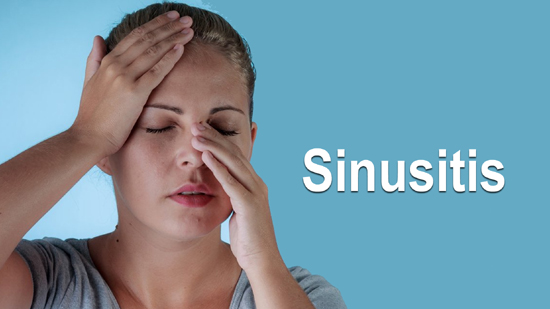




.jpg)
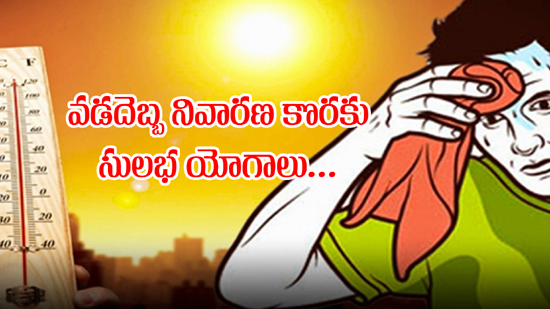
.jpg)


